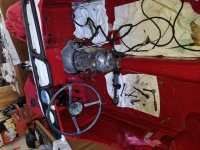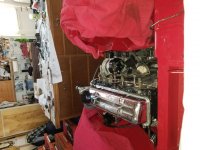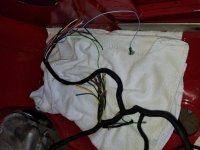Offline
I am moving on to installing heater steering wheel wiring harness and the electrical system, of course there are questions. I have looked over past posts and found some great information, unfortunately I lost the threads with posts and pics from Randall and Geo regarding the use of a small resistors? behind gauges which I would like to see those again as I think these were good additions and would be worth doing if you guys would not mind re-sharing? Sadly this has been a wild journey, I bought the cloth wiring harness from TRF in 1993 (and now it's going in the car yea!), gear reduction starter (2010), alternator conversion kit from Moss (2013) and the gauges have all been restored by Palo Alto Speedometer (2014), an aluminum low profile Fan (12V) Radiator from Wizard Cooling (2012) with relay and wiring harness, now it time to get it done. Presently I am debating the order in which to proceed with installing the dash, heater, wiring and other bits and wondering how it all fits together AND HOPEFULLY I don't need to buy too much more stuff at this point.
What are your suggestions, recommendations and "best practices" for putting all this stuff neatly and safely into the car? Any pictures of installations is welcomed too! Where and what is the connector on the blue wire in the third picture?
I appreciate your input!



What are your suggestions, recommendations and "best practices" for putting all this stuff neatly and safely into the car? Any pictures of installations is welcomed too! Where and what is the connector on the blue wire in the third picture?
I appreciate your input!




 Hi Guest!
Hi Guest!

 smilie in place of the real @
smilie in place of the real @
 Pretty Please - add it to our Events forum(s) and add to the calendar! >>
Pretty Please - add it to our Events forum(s) and add to the calendar! >> 



